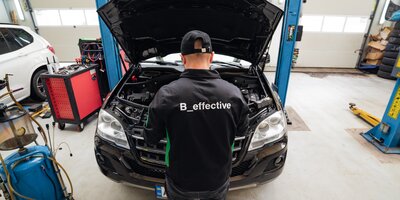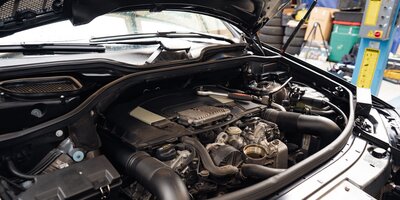WHAT IS A 5W-30 C3 DIESEL OIL? ACEA-C SPECIFICATION
Properties of low or mid-SAPS oils
Why does oil burn?
What should you take into account when choosing diesel oil? You must know that some oil might, inevitably, burn with the fuel: even under low manufacturing tolerances of engine components, it may happen. Naturally, this is conditioned by some factors, like wear of the piston rings, time of year or driving style. And when this happens, small amounts of oil get into the combustion chamber of the engine through the piston rings or valve guides and burn there as well. The burnt residues are then filtered out by the exhaust aftertreatment systems.
What happens to the burnt oil?
If the burnt engine oil has high levels of sulphate ash (SA), phosphorus (P) and sulphur (S), the downstream exhaust gas aftertreatment systems are highly loaded. Diesel particulate filters (DPF), SCR catalytic converters and gasoline particulate filters (GPF) can then become clogged and as a result, lose their function. In the worst case, they might stop reducing exhaust emissions, which can impact the engine’s performance.
Low- or mid-SAPS oils help to relieve exhaust aftertreatment systems
Therefore, a low content of sulphated ash (SA), phosphorus (P) and sulphur (S) is important in the development of new engine oils. These low- or mid-SAPS oils have a reduced ash-forming content and are gentle on exhaust aftertreatment systems. They ensure that the fine filter systems do not clog so quickly and are an important contribution to ensuring environmental protection.
ACEA-C specification
The ACEA (Association of European Automobile Manufacturers) defines the quality of engine oils on the basis of European requirements. The designations of the ACEA specifications are composed of the suitability for a certain type of engine / exhaust gas aftertreatment (A, B, C, E). Engine oils with an ACEA C specification meet the requirements of a low upper limit of ash-forming components and are designed for passenger cars with diesel and gasoline engines that are equipped with a diesel particulate filter (DPF), SCR catalytic converters and gasoline particulate filters (GPF).
BIZOL Technology 5W-30 C3
Car owners should definitely pay attention to the choice of the right engine oil. The “Technology” product range from BIZOL offers high-quality low- and mid-SAPS engine oils based on fully synthetic and HC synthetic base oils that meet the high requirements of the ACEA Class C specifications. In particular, BIZOL Technology 5W-30 C3 is a high-quality engine oil for diesel engines with turbochargers and diesel particulate filters (DPF). The combination of base oils of the unconventional synthesis technology and an additive package of the latest generation results in an engine oil with high shear stability, a stable viscosity over a wide temperature range, a low viscosity and high shear stability.

You might also like

The modern marvel of an internal combustion motor powers our vehicles, providing the strength and reliability we rely on for daily transportation. However, just like anything else subjected to constant use, motorized units experience wear and tear over time. Component deterioration can significantly impact performance and longevity. In this article, we will delve into the intricacies of engine wear meaning, explore the various causes behind it, provide actionable tips to reduce and prevent it. Furthermore, we will look at how specialized engine oils, such as BIZOL, play a crucial role in safeguarding your engine’s health. Let’s begin by understanding what engine wear is and the factors that contribute to it.

The melodious purr of a motor, the velvety transition of cog-wheel, and the elegant voyage along the expansive highway — these are the unmistakable characteristics of a meticulously calibrated self-shifting gearbox system. But what transpires when the motorized ensemble falters, the cogs gnash, and the voyage veers into an unforeseen tempest? Get into the realm of automatic transmission problems, a domain where automotive aficionados and everyday motorists alike encounter the enigmatic intricacies of this complex system.

Driving is a blend of exhilaration and convenience, but sometimes, your trusty car can hit a snag. One of the most frustrating issues is a coolant leak.
Coolant, often referred to as the versatile 'antifreeze,' assumes the uncelebrated role of an automotive guardian, ensuring your engine's harmonious operation. This unassuming fluid stands as a bulwark against the scorching summer heat and the bone-chilling cold of winter. Nevertheless, when the vigilance of antifreeze wanes, and it embarks on an unauthorized journey beyond its confines, ominous troubles come into view.

